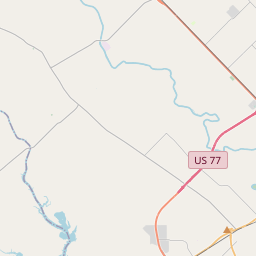Victoria County Monument
Historical marker location:






Center front:
Under the Mexican Government Victoria was a district in 1832, a Municipality in 1835. Under the Republic of Texas Victoria County was created March 17, 1836 with Victoria as the County Seat. Its Territory has since been materially reduced through the creation of other counties. The principal industry of the people of the region during the 19th century was cattle raising. Here that industry had its origin in Texas, and Victoria County continues to the present day to be the leading cattle county of the state.
Left Front:
Victoria County, early home of the Karankawa Indians. Region roamed by Alvar Nunez Cabeza de Vaca in 1534-1535, the first white man and companions to travel from the Atlantic to the Pacific Ocean. Site of the first French settlement in Texas attempted by Rene Robert Cavelier Sieur de La Salle and companions who built Fort St.Louis on Garcitas Creek in 1685. Devastated by the Karankawa Indians burned by members of the Alonso De Leon expedition in 1689. On its remains the Spaniards constructed Presidio de Nuestra Senora de Loreto de la Bahia Del Espiritu Santo.
Right Front:
As a protection for the Mission de Nuestra Senora del Espiritu Santo de Zuniga both established by Joseph De Azlor, Marquis of Aguayo and Father Fray Agustin Patron, O.F.M. in 1722. Both moved to Mission Valley on the Guadalupe River in 1726. Moved finally to Santa Dorothea no Goliad near the San Antonio River in 1749. The area embraced by this county settled by the Colony of Martin De Leon, empresario in 1824 the region was settled by Martin De Leon, empresario, in 1824 who named the seat of his colony Guadalupe Victoria in honor of the president of Mexico, hero of its struggle for Independence. (1936)
As one of the most visible programs of the Texas Historical Commission (THC), historical markers commemorate diverse topics in Texas history, including: the history and architecture of houses, commercial and public buildings, religious congregations, and military sites; events that changed the course of local and state history; and individuals who have made lasting contributions to the state, community organizations, and businesses.
The Johnson Space Center, located in Houston, played a crucial role in the development of the U.S. space program. It was here that NASA trained its astronauts and mission control teams, and it continues to be an important center for space research and exploration today.
In the early 19th century, Anglo-American settlers began to move into the area, attracted by the fertile land for agriculture and the potential for ample grazing. The Mexican government encouraged colonization, and by 1834, there were around 100 families living in the region. However, tensions between the settlers and the Mexican government eventually led to the Texas Revolution in 1835.
During the Texas Revolution, Victoria became a strategic point for both the Texian and Mexican armies. The Battle of Guadalupe River occurred here in 1835, where the Texian rebels under the command of George Collingsworth captured the Mexican garrison without bloodshed. The town of Victoria formally became the capital of the Republic of Texas in 1839 before it was moved to Houston and later Austin.
In the late 19th and early 20th centuries, Victoria County experienced significant growth and development. The railroad arrived in the late 1800s, leading to increased trade and the expansion of the local economy. The discovery of oil in the early 20th century further contributed to the county's prosperity. Today, Victoria County is a thriving hub for agriculture, oil and gas production, and serves as a regional center for healthcare, education, and businesses.
Victoria County Timeline
This timeline provides a condensed summary of the historical journey of Victoria County, Texas.
- 1824 - Victoria County is established as a Municipality of Mexico
- 1836 - Texas gains independence from Mexico
- 1837 - Victoria County is created as an original county of the Republic of Texas
- 1852 - The town of Victoria becomes the county seat
- 1860 - Population of Victoria County reaches 2,305
- 1874 - The Texas Mexican Railway expands into Victoria County, stimulating economic growth
- 1899 - Oil is discovered in the county, leading to a boom in the petroleum industry
- 1924 - The DuPont Company establishes a plant in Victoria County, contributing to industrial development
- 1930 - Population of Victoria County exceeds 30,000
- 1952 - The O'Connor-Proctor Building, the first air-conditioned building in town, is constructed
- 1960 - Victoria County Courthouse is added to the National Register of Historic Places
- 2008 - Hurricane Ike causes extensive damage to Victoria County
- 2019 - Victoria County celebrates its 182nd anniversary